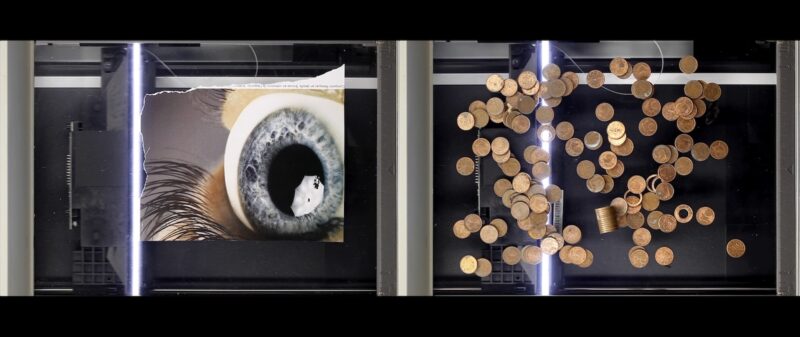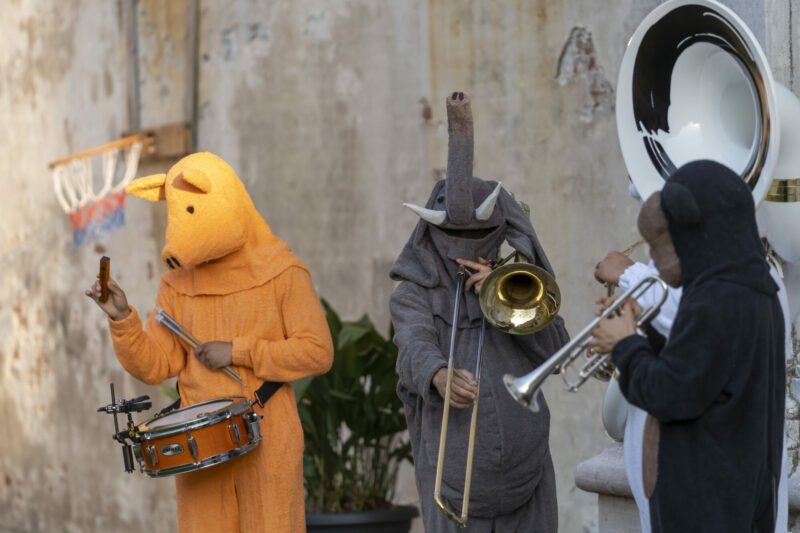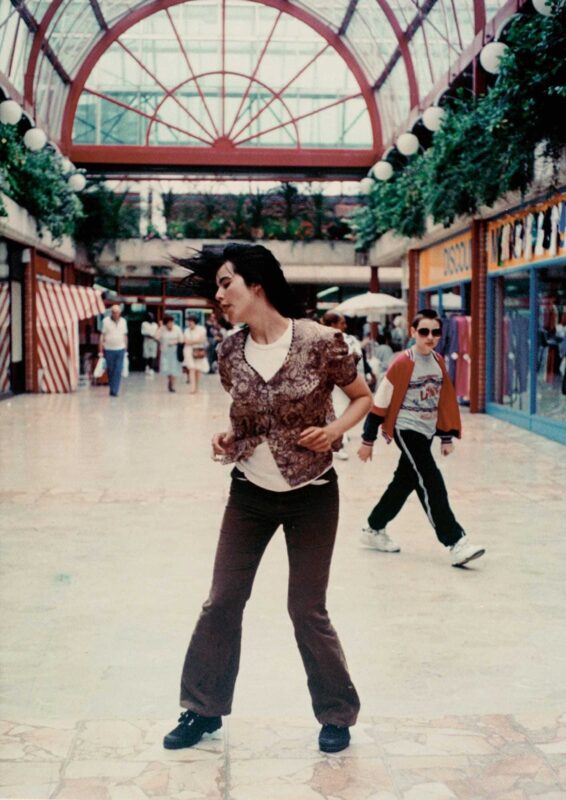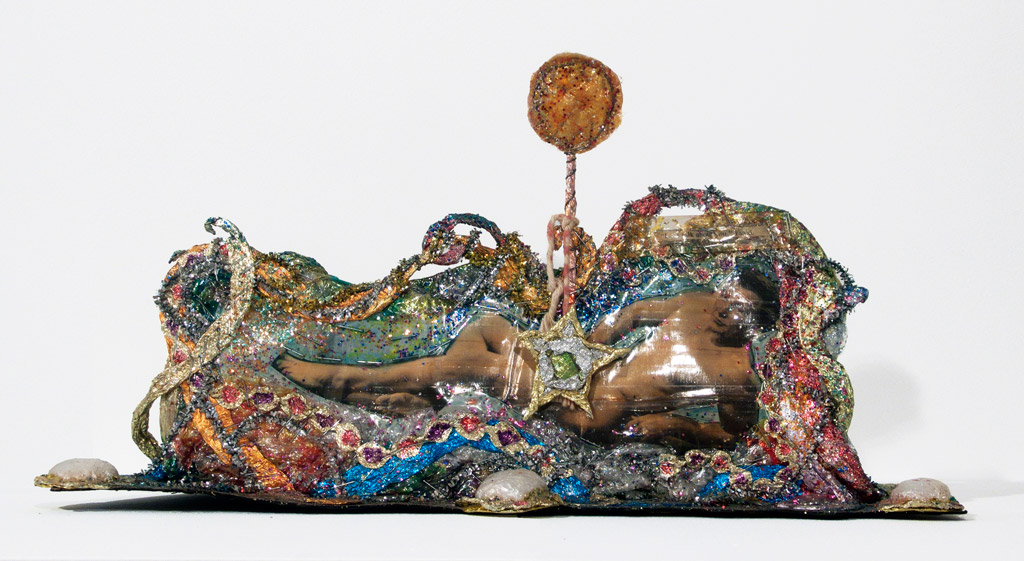
![]()
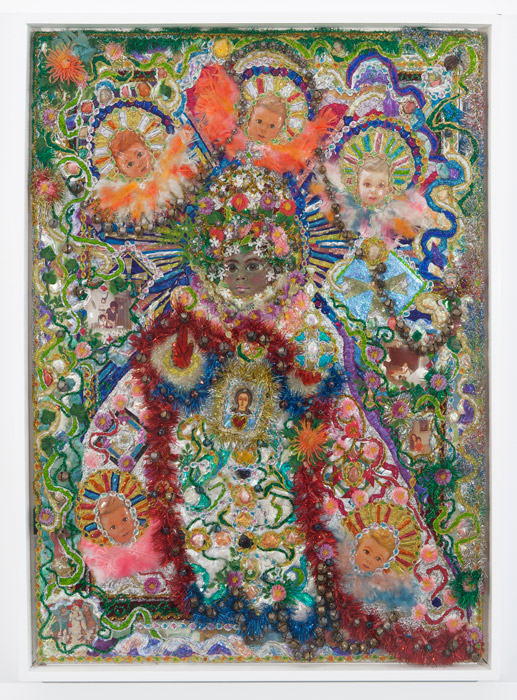
Images:(1–3) Thomas Lanigan-Schmidt. The Infant of Prague as a Personification of Liberation Theology (detail). 1986. Mixed media on pane. 49 x 36 inches. Courtesy International Collage Center. (4) Thomas Lanigan-Schmidt. Lollipop Knick Knack (Let’s Talk About You). c. 1968-69. Mixed media. 9 x 16 x 5 1/2 inches. Courtesy Pavel Zoubok Gallery, Photo Credit: Schroeder Romero & Shredder. © 2012 MoMA PS1 | An Affiliate of The Museum of Modern Art
MoMA PS1 presents the largest survey to date of Thomas Lanigan-Schmidt (American, b. 1948), comprising 85 works dating from 1967 to 2005, including two of the artist’s seminal installation environments, which the artist re-created onsite at MoMA PS1. Organized by MoMA PS1 Curator Peter Eleey, Thomas Lanigan-Schmidt: Tender Love Among the Junk is on view on the 2nd floor of MoMA PS1 through April 1, 2013. Lanigan-Schmidt’s mixed-media constructions, collages, and installations are marked by a trashy opulence concocted from household items, street-scavenged detritus, and dollar stores. Creating Byzantine decorations and medieval icons from plastic wrap, cellophane, aluminum foil, nail polish, tinsel, and glitter, Lanigan-Schmidt pioneered a maximalist aesthetic that comingled gay sexuality, class struggle, and religious faith.
He bucked the reductive tastes of Conceptualism and Minimalism that dominated his youth, mingling high with low, and sacred with profane, to create a radically decorative practice that, despite its influence, has stubbornly resisted assimilation into the history of American art. In the late 1960s, Lanigan-Schmidt departed the working-class immigrant Catholic and Greek Orthodox confines of Linden, New Jersey, for the East Village, where he initially made his art out amid the trash of the street. Shortly thereafter, he began creating fantastical installations in his two-room apartment on East 4th Street. Often dressed in drag, Lanigan-Schmidt toured friends and visitors through elaborately ornamented environments such as The Sacristy of the Hamptons (1969) and The Gilded Summer Palace of Czarina Tatlina (1969-1970), which featured foil renditions of relics, regal paraphernalia and liturgical objects alongside sculptures of glittering rats and bedbugs. As a teenage runaway arriving in New York, Lanigan-Schmidt quickly found a community.
In June of 1969, he was present at the Stonewall riots in Greenwich Village, the series of spontaneous and violent demonstrations against a police raid of a gay bar that ignited the contemporary gay rights movement; he remains among the few surviving veterans of the event. He met the influential curator Henry Geldzahler, as well as the theater artists Jack Smith and Charles Ludlam, who together came to serve as mentors and friends.
Describing Lanigan-Schmidt’s “new orthodoxy of Queer Catholicism,” Ludlam summarized the artist’s aesthetic as a reflection of his “taste for botanicas, gypsy storefronts and Puerto Rican boys [combined] with the grandeur that was Rome… the grandeur that was St. Petersburg. … a genre more queer than Mexican folk art and a thousand times more detailed than Macy’s Christmas windows.” For more than four decades, Lanigan-Schmidt has mined his surroundings, taking as much from the kitchen drawer as from the church altar and the drag queen make-up kit. Dissolving the boundaries between folk art, fine art, and kitsch, he conflates the value of his modest materials with the marginal respect he feels is accorded to those of his class background and sexual identity. “To survive,” he insists, “those on the bottom must transform these materials into one art form or another to express self-worth in a society that considers them almost worthless.” According to his “theology of glitter and poverty,” the artist notes, “it is not the gold but the glow that counts,” and in the right light you can glimpse redemption among the junk.
Thomas Lanigan-Schmidt (American; b. Elizabeth, NJ, 1948) lives and works in New York City.
He has been exhibiting his work since the late 1960s (in galleries since 1973), and has presented his work at institutions including the Whitney Museum of American Art and the Queens Museum of Art, both in New York; Contemporary Art Museum, St. Louis, MO; University Museum, University of California at Berkeley, CA; Groninger Museum, Gronigen, The Netherlands; and the Ludwig Forum für Internationale Kunst, Aachen, Germany. He participated in the International Pavilion of the 41st Venice Biennale (1984) and the United States pavilion in the 39th Venice Biennale (1980). Lanigan-Schmidt’s work is represented in various public collections, including the Whitney Museum of American Art, the Albright-Knox Art Gallery, the Nelson-Atkins Museum of Art, and the Metropolitan Museum of Art.
